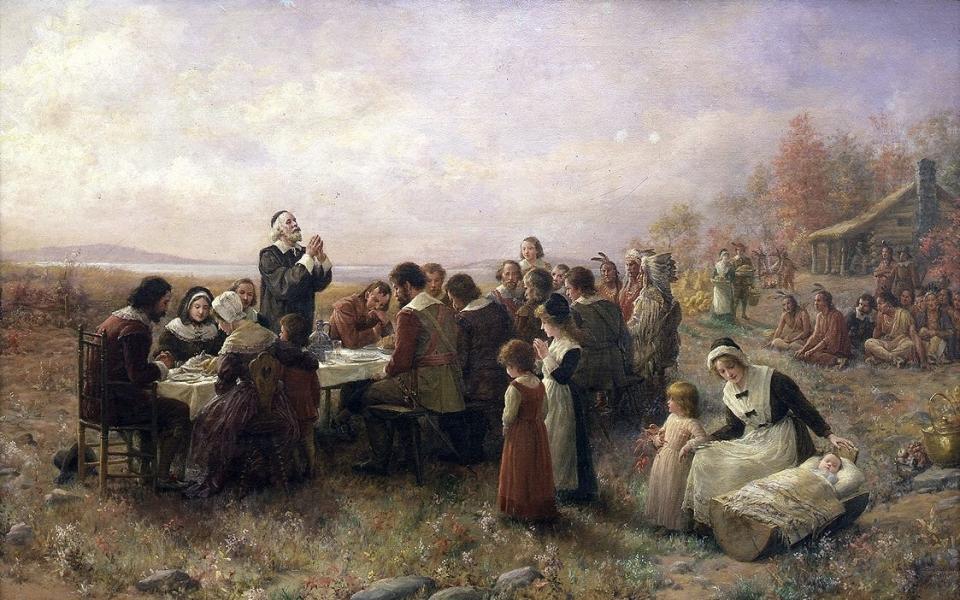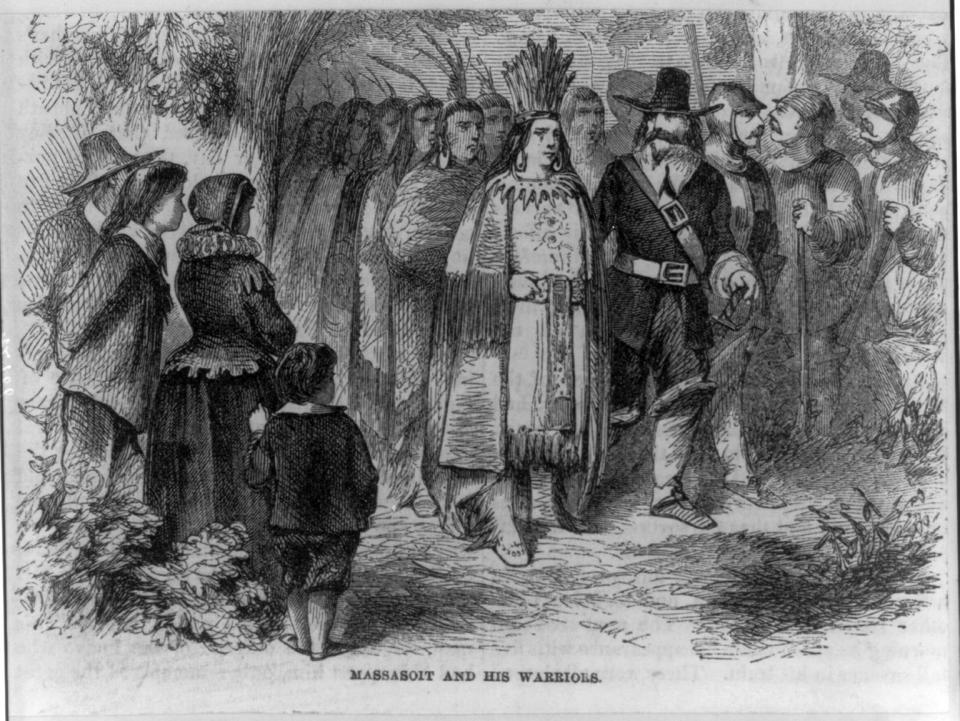When was the first Thanksgiving? What to know about the holiday's true history
As Thanksgiving approaches, and Americans prepare to stuff themselves full of turkey and pumpkin pie, it's important to know the history behind the annual fall holiday.
Especially because the traditional "first Thanksgiving" story taught in schools tends to erase the true history, with children dressed up as "Pilgrims" and historically inaccurate "Indians."
When and where was the first Thanksgiving?

Americans are told the first Thanksgiving took place in 1621, when the Pilgrim settlers of Plymouth, Massachusetts, invited the Wampanoag to a harvest feast.
The story goes the meal invite was to thank them for their help in planting crops, and that a warm friendship budded between the two people groups.
But according to the Mashpee Wampanoag — one of three Wampanoag tribes remaining out of the original 69 — tribe members were not invited but showed up later, possibly after hearing recreational gunfire and believing they needed to aid the Pilgrims.
Were the Wampanoag and the Pilgrims friends?

While the Wampanoag did help the Pilgrims learn to survive in the new land, the popular story effectively blots out the genocide and taking of Wampanoag and other tribes' land that followed in the decades to come.
The relationship between the Wampanoag and the Pilgrims started as mutually beneficial. In the years just before the Pilgrims arrived, about two-thirds of the Wampanoag people had been wiped out from a mysterious disease.
Ousamequin, the great sachem of the Wampanoag, had to decide between letting the Pilgrims struggle or becoming their allies. Doing so would allow his people to gain access to weapons needed to fend off the Narragansetts, a neighboring tribe who now far outnumbered them.
So the Wampanoag, largely with the help of interpretation by Tisquantum, also known as "Squanto," taught the Pilgrims to plant beans and squash with maize around it, using fish remains as fertilizer.
Do Native Americans celebrate Thanksgiving?
While many tribal members take the day to have a meal with their family and friends and be thankful for the year, many others use the day to mourn.
“Some of our families call it Thankstaking instead of Thanksgiving, because of the enactment of taking land, taking everything,” said Cornel Pewewardy, vice-chair of the Comanche Business Committee, the governing body of the southwest Oklahoma tribe. He is also a longtime educator.
In 1970, Wampanoag leader Wamsutta Frank James began the National Day of Mourning, in which Native Americans and supporters gather each year on Thanksgiving Day to mourn the loss of so many indigenous people and the theft of their lands.
In a speech written for the 350th anniversary celebration of the Pilgrims arrival in New England — during which the planners would not allow him to speak once they saw the speech — James planned to say that helping the Pilgrims was "perhaps our biggest mistake."
"We, the Wampanoag, welcomed you, the white man, with open arms, little knowing that it was the beginning of the end; that before 50 years were to pass, the Wampanoag would no longer be a free people," James wrote in that speech.
When did Thanksgiving become a national holiday?
More than 160 years after the 1621 feast, President George Washington declared Nov. 26, 1789, as a day of prayer and thanksgiving.
Thanksgiving itself was not celebrated annually until 1863 when President Abraham Lincoln declared the last Thursday of November as Thanksgiving Day to celebrate the Union Army’s victory at Gettysburg.
There was no mention of Pilgrims in either of these holiday declarations.
Staff writer Molly Young contributed to this report.
This article originally appeared on Oklahoman: Where was the first Thanksgiving hosted? What really happened in 1621

